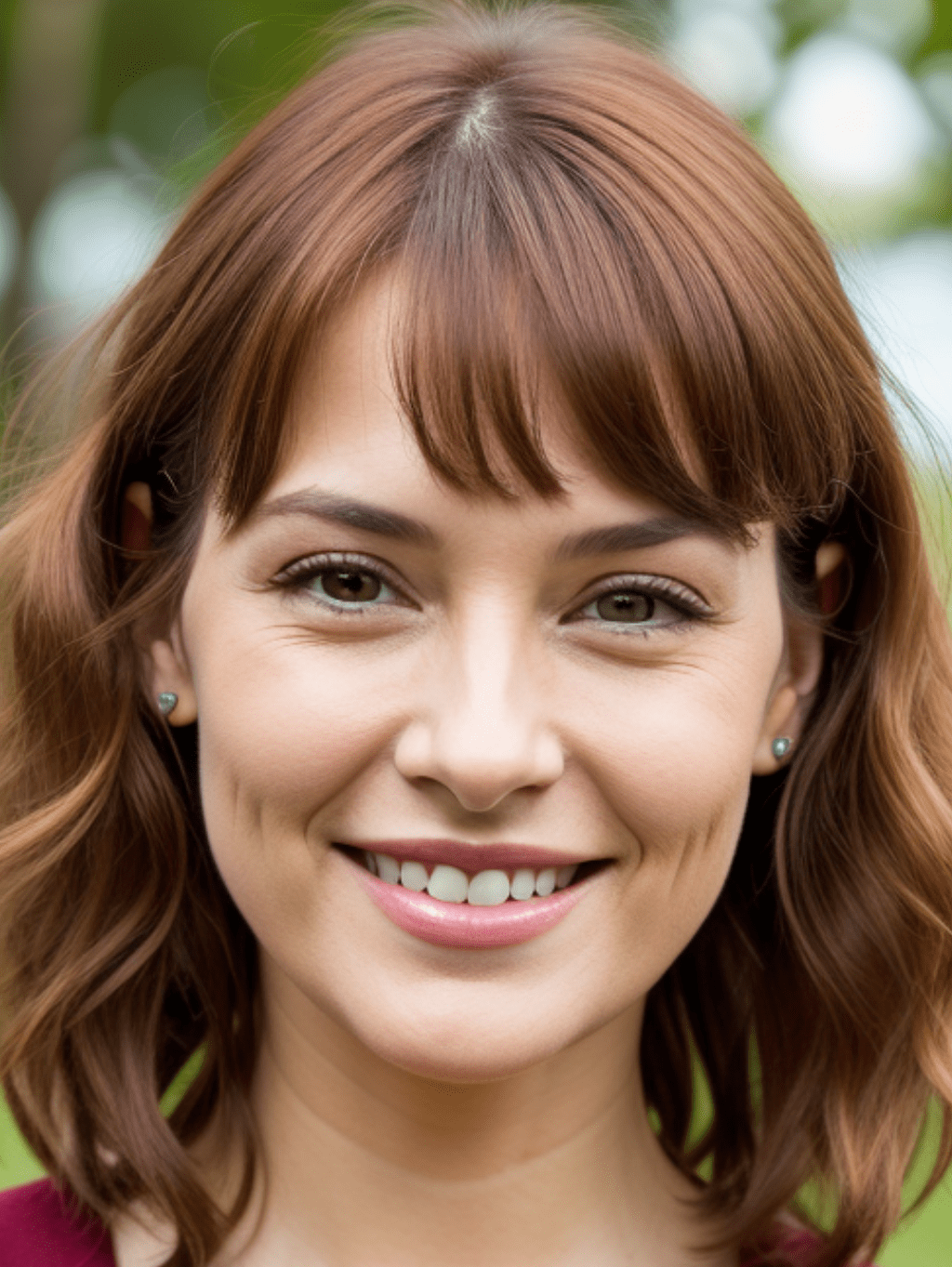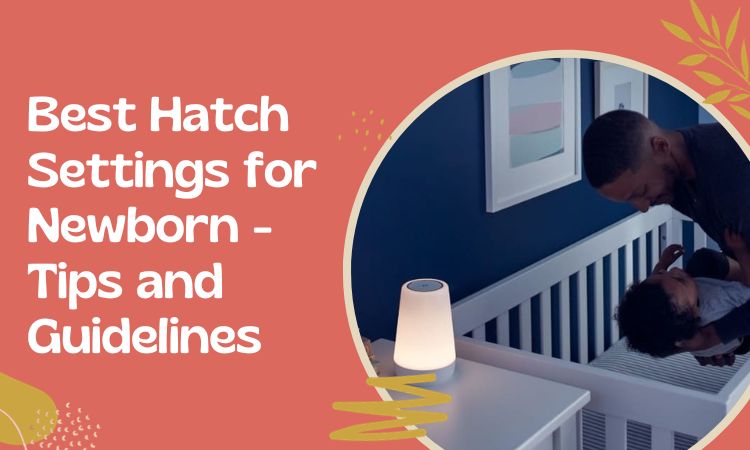First, in terms of sound, the TV static feature on the Hatch is an excellent choice for creating optimal sleep conditions. For lighting, it’s best to maintain a dark room as newborns typically don’t require nightlights.
Instead of turning on bright overhead lights or lamps, the red light feature on the Hatch strikes a perfect balance. It proves especially useful during those late-night feedings. As for volume, aim to set it between 40-60 decibels. These settings can contribute to a more restful experience for your newborn.
Explore the complete article to discover in-depth information about the Best Hatch Settings for Newborns.
Key Takeaways
- Creating a Soothing Newborn Environment: Carefully choose soft colors, appropriate brightness, gentle white noise, and suitable volume to create a comforting atmosphere for your newborn.
- Hatch Rest in Shared Rooms: Use the Hatch Rest to harmonize sleep schedules in shared rooms, signaling wake-up times for older siblings without disturbing others.
- Setting Hatch Sound Levels: Adapt settings based on room size and machine placement.
Best Hatch Settings for Newborn – Detailed Procedure
Creating a nurturing and soothing environment for your baby involves carefully considering each factor: Color, Brightness, Noise Type, and Volume.
Color:
Choose soft, gentle hues for your baby’s nursery, such as pale blues, light reds, soft greens, and muted pastel pinks. These colors promote a serene and calming atmosphere, which can help your newborn feel more relaxed.
Research suggests that pastel colors can positively affect a baby’s mood and sleep patterns. Refrain from using vibrant or striking colors, as they may prove excessively stimulating for a newborn’s delicate vision.
Color is a very crucial factor for better sleep. So you should be alert of the best hatch color for sleep.
Brightness:
Maintaining the right level of brightness is crucial. Consider purchasing blackout curtains to regulate the level of natural light that enters the room.
This ensures that your baby’s sleep schedule isn’t disrupted by bright sunlight during naps or at night. Utilize soft, adjustable lighting with options like dimmer switches or lamps to create a cozy ambiance.
For nighttime activities like feeding or diaper changes, consider a gentle nightlight to illuminate the room without being overly bright.
Noise Type:
Newborns often find comfort in white noise or rhythmic sounds reminiscent of the womb. Make sure the noise isn’t too loud; typically, a noise level of 50-60 decibels is ideal.
- White noise at 20% and no light for naps and sleep
- Red light and rain up to 15% for overnight and pre-bedtime.
White noise machines or apps offer a wide array of options, including ocean waves, rain, heartbeats, or even lullabies. To discover the ideal noise variety, try out various sounds and pay attention to your baby’s reactions.
The key is to create a soothing, familiar auditory backdrop. This replicates the calm environment they encountered in the womb, which encourages improved sleep.
Volume:
The volume of the chosen noise type should be soft but audible. It should act as a buffer against sudden, disruptive external noises, helping your baby stay calm and sleep peacefully.
Steer clear of excessively loud volumes that might startle your baby. Commence with a lower volume and incrementally fine-tune it to suit your baby’s comfort level.
Some babies prefer slightly louder white noise, while others may find lower volumes more soothing. Observe your baby’s signals and adjust your actions accordingly.

Many parents also use boppy loungers for their babies to make them rest and small naps. You should also look at boppy loungers for baby sleep.
Using Hatch Rest in a multi-age shared room
Here’s how to use Hatch Rest in a shared room if your kids wake up at different times. The Hatch Rest can be a game-changer in such situations.
Nighttime:
For nighttime, the TV static sound without any light is perfect unless you require minimal lighting for specific reasons. In that case, select the red light at just 1% brightness to maintain a sleep-conducive environment.
Designated Morning Wake Time for Older Sibling(s):
If you have an older child waking earlier, maintain the TV static sound to preserve a consistent sleep backdrop. However, add a gentle yellow light at 1% brightness to signal that it’s time to wake up. Be cautious not to change the sound or turn off the white noise, as this could disturb the others.
Designated Morning Wake Time for younger siblings:
Change the ambiance to a cheerful one with birds chirping and a green light for younger siblings. This transition creates a gentle, wakeful atmosphere without disturbing the older siblings who may still be resting.
When children of different ages and schedules share a room, the Hatch Rest encourages good sleep habits. Your kids can coexist in the same space harmoniously with a bit of guidance and practice.

Determine the sound level of your Hatch
To determine the sound level of your Hatch, follow these steps:
- Download a decibel meter app on your phone.
- Position your phone within your child’s sleeping area with the app activated.
- Activate your Hatch Sound Machine and modify the volume until the app registers a range of 40-60 decibels.
For younger babies, a louder volume mimics the womb’s comforting environment. Older babies may need increased volume to block out household noise.
Settings vary based on room size and machine placement in relation to your child’s sleep area.

Frequently Asked Questions (FAQs):
When should babies stop sleeping with white noise?
A parent or caregiver may wean their infant off white noise at two, three or four years of age. Adults can also benefit from white noise for sleep and can use it at any age. Be sure to follow safe sleep guidelines and never exceed 60 decibels.
Is pink noise bad for babies?
In addition to White Noise devices, Pink Noise devices may be better for babies, as more and more studies support their long-term benefits.
What sounds make newborns stop crying?
When you need to calm your baby’s crying after bedtime, during naps, or at night, use white noise. If you use a white noise machine to soothe your child, make sure it’s turned up just as loud as their cries.
Conclusion
I hope this article will help you to learn the Best Hatch Settings for newborns. Now you know detailed settings methods of hatch settings. Also, you get some tips for multi-aged room settings and sound level checking.
More Related Guides
Can Baby Sleep in Boppy Lounger Supervised - Detailed Answer
Best Bottle for Messy Eater: Our Top 4 Picks!
When to Use Baby Powder vs Cream: The Choice [+8 Safety Tips]
Best Pacifier for Lip Tie: Our Top 5 Picks!

Sheen is a mommy blogger and founder of MomCritics with two motives of life. The one is the perfect parenting of her two kids and the second is to help moms around the globe with helpful content.


